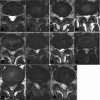Surgical Strategy for Lumbar Disc Herniation based on the MSU Classification: Percutaneous Endoscopic Lumbar Discectomy versus Transforaminal Lumbar Interbody Fusion: A 5-year Retrospective Study
- PMID: 38961670
- PMCID: PMC11293921
- DOI: 10.1111/os.14145
Surgical Strategy for Lumbar Disc Herniation based on the MSU Classification: Percutaneous Endoscopic Lumbar Discectomy versus Transforaminal Lumbar Interbody Fusion: A 5-year Retrospective Study
Abstract
Objective: Currently, there is no established guideline on whether to opt for percutaneous endoscopic lumbar discectomy (PELD) or traditional transforaminal lumbar interbody fusion (TLIF) surgery based on specific types of lumbar disc herniation (LDH). Based on the Michigan State University (MSU) classification system, this study conducted a medium- to long-term follow-up analysis of two surgical methods over 5 years for the first time, aiming to provide empirical evidence to assist in making more informed decisions before surgery for LDH treatment.
Methods: This was a retrospective study that included 273 patients with single-level LDH who underwent PELD or TLIF treatment at our hospital between January 1, 2016, and December 31, 2018. Detailed metrics included preoperative and postoperative visual analogue scale (VAS) scores and Oswestry disability index (ODI) at 1-day, 1-week, 1-year, and 5-year follow-ups. Complications, recurrences, and 5-year postoperative modified MacNab criteria scores were also recorded. Statistical methods included independent sample t-tests, repeated measures analysis of variance (ANOVA), and χ2 tests.
Results: Classified into seven groups according to the MSU classification, it was found that there was an improvement in the VAS and ODI scores at four postoperative follow-ups (p < 0.001). PELD showed better results than TLIF in reducing pain and improving the ODI scores in the classifications of 3B, 2B, and 2C (p < 0.05). TLIF demonstrated consistent superiority over PELD in 2A, 2AB, 3A, and 3AB classifications (p < 0.05). The total recurrence rate in the PELD group (11.05%) within 5 years after surgery was higher (p < 0.05) than that in the TLIF group (3.96%). These were mainly concentrated in the 2A, 2AB, 3A, and 3AB types. Moreover, the rate of excellent and good outcomes in the PELD was higher than in the TLIF but no significant difference (χ2 = 1.0568, p = 0.5895).
Conclusion: This study suggests that PELD and TLIF may relieve LDH, but have advantages under different MSU classifications. The MSU classification has specific guiding significance and could aid in the surgical selection of PELD or TLIF to achieve optimal treatment outcomes for patients with lumbar disc herniation.
Keywords: Lumbar disc herniation; MSU classification; PELD; Retrospective study; TLIF.
© 2024 The Author(s). Orthopaedic Surgery published by Tianjin Hospital and John Wiley & Sons Australia, Ltd.
Conflict of interest statement
The authors report no conflicts of interest.
Figures




Similar articles
-
Percutaneous Endoscopic Lumbar Discectomy via Transforaminal Approach Combined with Interlaminar Approach for L4/5 and L5/S1 Two-Level Disc Herniation.Orthop Surg. 2021 May;13(3):979-988. doi: 10.1111/os.12862. Epub 2021 Apr 5. Orthop Surg. 2021. PMID: 33821557 Free PMC article.
-
Percutaneous Endoscopic Lumbar Diskectomy and Minimally Invasive Transforaminal Lumbar Interbody Fusion for Recurrent Lumbar Disk Herniation.World Neurosurg. 2017 Feb;98:14-20. doi: 10.1016/j.wneu.2016.10.056. Epub 2016 Oct 20. World Neurosurg. 2017. PMID: 27773858
-
Comparison Between Percutaneous Endoscopic Lumbar Discectomy and Minimally Invasive Transforaminal Lumbar Interbody Fusion for Lumbar Disc Herniation with Biradicular Symptoms.World Neurosurg. 2018 Dec;120:e72-e79. doi: 10.1016/j.wneu.2018.07.146. Epub 2018 Jul 25. World Neurosurg. 2018. PMID: 30055359
-
Comparison of percutaneous endoscopic lumbar discectomy versus microendoscopic discectomy for the treatment of lumbar disc herniation: a meta-analysis.Int Orthop. 2019 Apr;43(4):923-937. doi: 10.1007/s00264-018-4253-8. Epub 2018 Dec 13. Int Orthop. 2019. PMID: 30547214
-
Percutaneous Endoscopic Lumbar Discectomy Versus Posterior Open Lumbar Microdiscectomy for the Treatment of Symptomatic Lumbar Disc Herniation: A Systemic Review and Meta-Analysis.World Neurosurg. 2018 Dec;120:352-362. doi: 10.1016/j.wneu.2018.08.236. Epub 2018 Sep 8. World Neurosurg. 2018. PMID: 30205219
Cited by
-
Efficacy of Selective Nerve Root Block for Different Types of Lumbar Disc Herniation: Study Protocol for a Single-Blind, Prospective Cohort Study.J Pain Res. 2025 Feb 28;18:1035-1043. doi: 10.2147/JPR.S494496. eCollection 2025. J Pain Res. 2025. PMID: 40041673 Free PMC article.
References
-
- Al Qaraghli MI, De Jesus O. Lumbar disc herniation. StatPearls. Treasure Island, FL: StatPearls Publishing; 2023. - PubMed
Publication types
MeSH terms
Grants and funding
LinkOut - more resources
Full Text Sources
Medical

